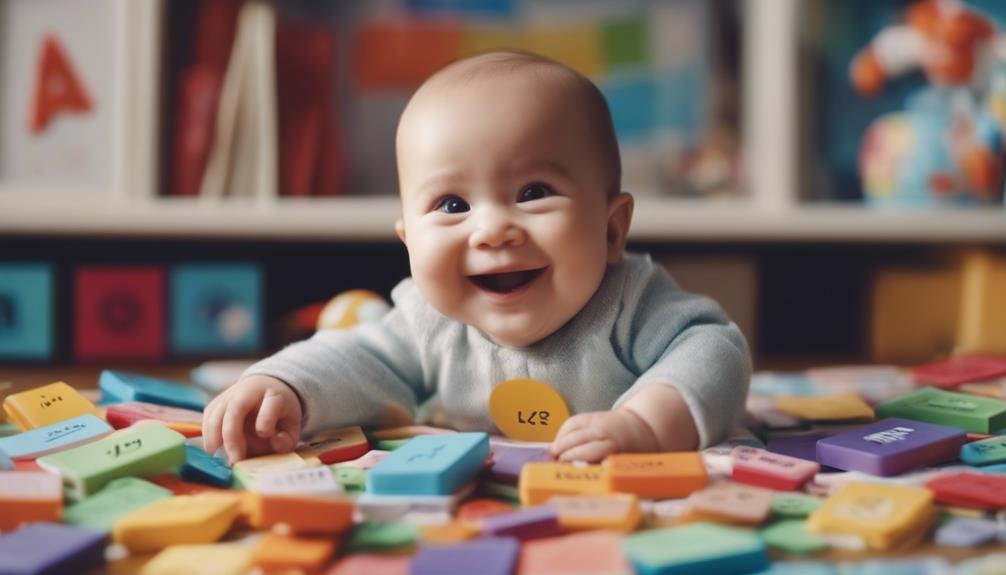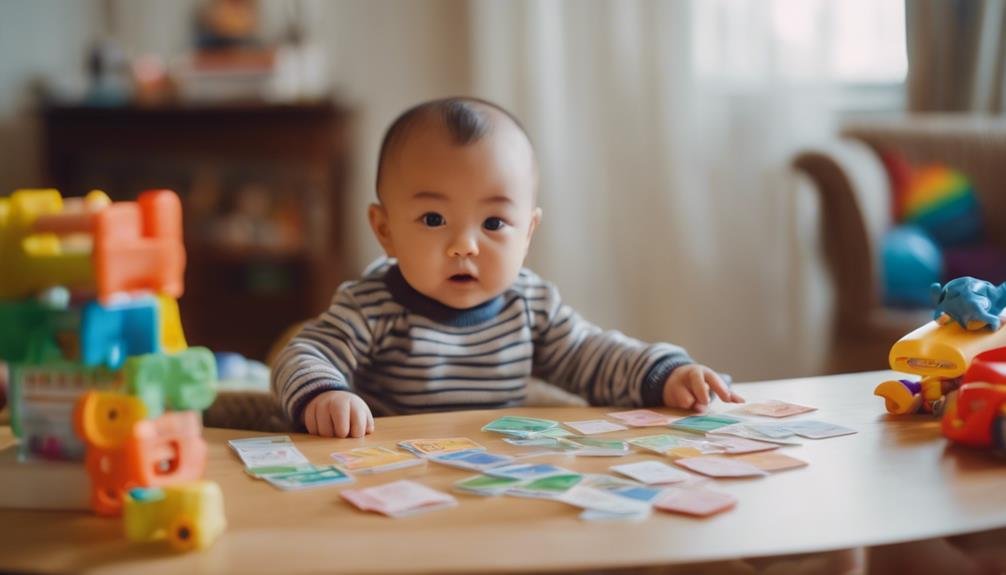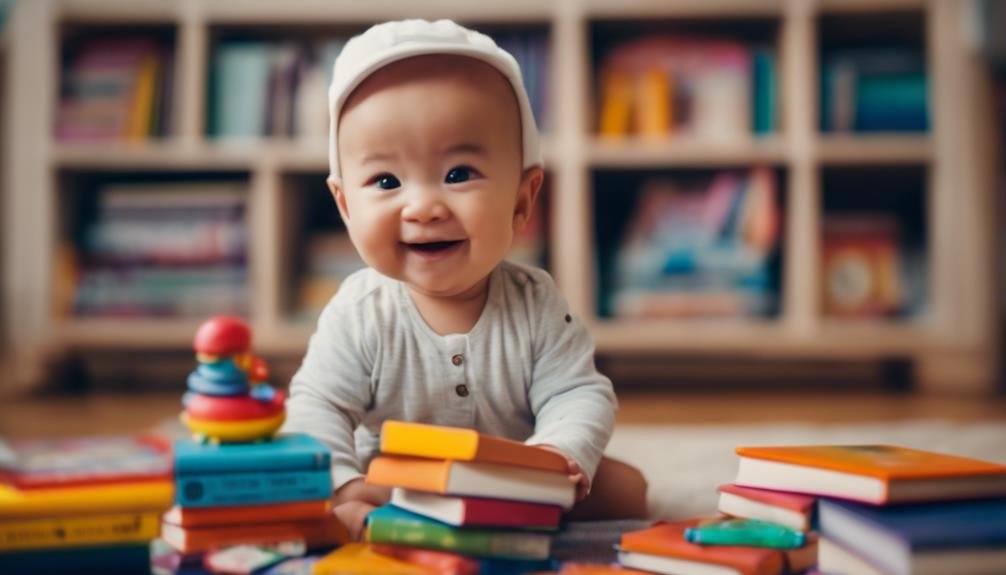"Cherishing Little Steps - A Haven for Baby and Family Journeys"
Bilingual Babies: Tips for Teaching a Second Language Early On
They say, 'The early bird catches the worm,' and when it comes to teaching your baby a second language, starting early can make all the difference.
But where do you begin? With practical tips and strategies tailored to your little one's development, you can set the foundation for a lifetime of bilingualism.
From creating a language-rich environment to fun and engaging activities, discover how you can seamlessly introduce a second language into your baby's world.
Key Takeaways
- Start early to enhance cognitive development and cultural connection.
- Choose the right language approach for natural acquisition and engagement.
- Incorporate language into daily routines for seamless learning integration.
- Create a positive language environment with activities that boost proficiency and enjoyment.
Benefits of Early Language Exposure

Moreover, early language exposure in children has been shown to greatly enhance cognitive development and overall language proficiency. Research suggests that introducing a second language to children at an early age can lead to improved problem-solving skills, better multitasking abilities, and enhanced critical thinking. Additionally, children who are exposed to multiple languages from a young age tend to have a more profound cultural connection and appreciation for diversity.
Studies indicate that bilingual children often exhibit higher levels of creativity and flexibility in their thinking processes. They tend to have an easier time understanding different perspectives and adapting to new situations. This cognitive development can have long-lasting effects on a child's academic performance and social interactions.
Moreover, early exposure to a second language can help children develop a sense of belonging to different cultural groups. This cultural connection not only fosters empathy and open-mindedness but also equips children with valuable communication skills that can be beneficial in an increasingly globalized world.
Choosing the Right Language Approach
To effectively guide children in acquiring a second language, it is important to carefully consider the most suitable language approach for their learning journey. One effective method is language immersion, where children are consistently exposed to the target language in various contexts. This approach helps them pick up the language naturally, similar to how they learned their first language. Additionally, incorporating a cultural connection into language learning can make the experience more engaging and meaningful for children. By infusing elements of the target culture into their language lessons, children can develop a deeper understanding and appreciation for the language.
Below is a table outlining different language approaches for teaching a second language:
| Language Approach | Description |
|---|---|
| Language Immersion | Complete immersion in the target language. |
| Cultural Connection | Integrating cultural elements into language learning. |
Incorporating Language Into Daily Routines

Incorporating language into daily routines is essential for reinforcing language skills and fostering fluency in a second language acquisition journey. To make language learning a natural part of your child's day, consider the following:
- Mealtime Songs: Singing songs in the target language during meals can make the experience enjoyable and educational. Use simple tunes and repetitive lyrics to help your child remember vocabulary related to food and eating.
- Bath Time Books: Reading bilingual books during bath time can create a relaxing environment for language practice. Choose books with colorful pictures and simple sentences to engage your child while introducing new words and phrases.
- Morning Greetings: Start the day by greeting your child in the second language. Use phrases like 'Good morning' or 'Bonjour' to build vocabulary and encourage language use from the beginning of the day.
- Bedtime Stories: Reading bedtime stories in the target language can be a calming way to end the day while reinforcing language concepts learned throughout the day. Choose stories with repetitive phrases to aid in retention and comprehension.
Engaging Activities for Language Learning
Engage your child in interactive games and hands-on activities to enhance their language learning experience and make it enjoyable and effective.
Interactive games, such as language learning apps or online platforms, can be a fun way to practice vocabulary and grammar while keeping your child engaged. These games often use visuals and auditory cues to reinforce language concepts.
Additionally, incorporating cultural songs into your child's routine can help them learn new words and phrases in a meaningful way. Singing along to songs in the target language can improve pronunciation and rhythm while exposing your child to different cultural aspects of the language.
To further enrich your child's language learning journey, consider activities like scavenger hunts where they've to find and label objects in the house with their corresponding names in the second language. This hands-on approach can boost vocabulary retention and comprehension.
Nurturing a Positive Language Environment

Creating a positive language environment at home lays a strong foundation for your child's language development and fluency. To nurture this environment effectively, consider the following:
- Consistency is Key: Make sure to consistently expose your child to the second language through daily interactions, activities, and routines. This repetition helps solidify language learning.
- Create a Language-Rich Environment: Surround your child with books, music, and games in the second language. This immersion enhances their language skills and fosters a deeper understanding.
- Encourage Cultural Connections: Explore cultural traditions, holidays, and foods associated with the second language. This not only enriches language learning but also promotes a sense of belonging to a broader community.
- Celebrate Milestones: Acknowledge and celebrate your child's progress in language learning. Positive reinforcement boosts confidence and motivation, leading to continued growth.
Frequently Asked Questions
Are There Any Potential Downsides to Teaching a Second Language to Babies at an Early Age?
When teaching a second language to babies, potential challenges may include maintaining language balance. Ensuring exposure to both languages equally is essential for effective learning. Consistency and patience are key in successfully raising bilingual babies.
How Can Parents Determine if Their Child Is Ready to Start Learning a Second Language?
Feeling the rhythm of your child's language readiness is like dancing to their unique beat. Notice their curiosity, use age-appropriate methods, nurture cognitive development, and infuse cultural immersion. Embrace the journey together.
Can Teaching a Second Language Early on Interfere With a Child's Development of Their First Language?
Teaching a second language early on does not typically interfere with your child's first language development. In fact, it can enhance cognitive skills and language abilities. Parental involvement and consistent language exposure play key roles in supporting language development.
Are There Specific Techniques for Teaching a Second Language to Babies With Special Needs or Learning Disabilities?
To support babies with special needs or learning disabilities in learning a second language, use differentiated instruction and multisensory approaches. Individualized strategies and visual aids can enhance their language acquisition, making the learning process more accessible and effective.
How Can Parents Ensure That Their Child Maintains Proficiency in Both Languages as They Grow Older?
To guarantee language balance and cultural immersion for your child's proficiency, create a multilingual environment with language consistency. Use diverse resources, engage in daily conversations, read books, watch shows, and celebrate traditions in both languages to foster bilingualism.
Conclusion
Just as a garden requires nurturing and care to flourish, so too does a child's language development.
By incorporating a second language into daily routines, engaging in fun activities, and creating a positive language environment, you can help your bilingual baby blossom into a confident and skilled communicator.
Remember, like tending to a delicate flower, consistent effort and patience are key in cultivating a love for languages early on. Your efforts will surely bear fruit in the future.


